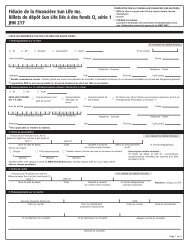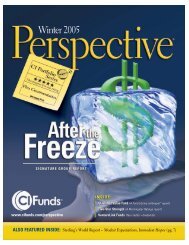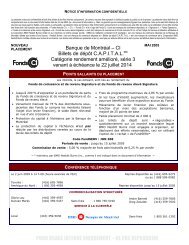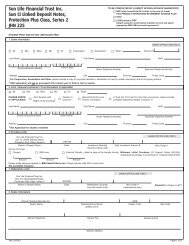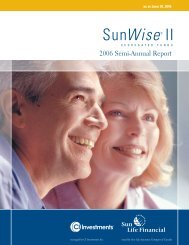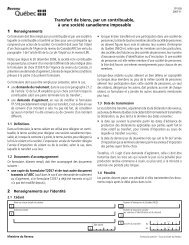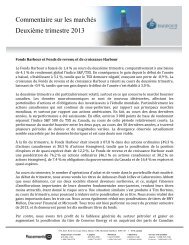July - Summer Edition - CI Investments
July - Summer Edition - CI Investments
July - Summer Edition - CI Investments
You also want an ePaper? Increase the reach of your titles
YUMPU automatically turns print PDFs into web optimized ePapers that Google loves.
Book reviews<br />
Brandon Snow<br />
Principal & Portfolio Manager<br />
Cambridge Advisors<br />
What I plan to read this summer<br />
The Little Book of Behavioral Investing: How not to be your<br />
own worst enemy (Little Book, Big Profits) by James Montie<br />
Wiley, 236 pages<br />
In order to better understand how other investors react in the<br />
market, I’m reading The Little Book of Behavioral Investing,<br />
which explores behavioural investing and the pitfalls many<br />
investors make.<br />
Bias, emotion, and overconfidence are<br />
just three of the many behavioral traits<br />
that can lead investors to lose money<br />
or achieve lower returns. Behavioral<br />
finance, which recognizes that there is<br />
a psychological element to all investor<br />
decision-making, can help you overcome this obstacle.<br />
In The Little Book of Behavioral Investing, expert James<br />
Montier takes you through some of the most important<br />
behavioral challenges faced by investors. Montier reveals<br />
the most common psychological barriers, clearly showing<br />
how emotion, overconfidence, and a multitude of other<br />
behavioral traits, can affect investment decision-making.<br />
Written in a straightforward and accessible style, The<br />
Little Book of Behavioral Investing will enable you to<br />
identify and eliminate behavioral traits that can hinder<br />
your investment endeavors and show you how to go about<br />
achieving superior returns in the process.<br />
– Wiley<br />
The best book I’ve read in the past year<br />
Lords of Finance: The Bankers Who Broke the World, by<br />
Liaquat Ahamed<br />
Penguin, 576 pages<br />
Lords of Finance helped me understand how new and<br />
dysfunctional central banks failed to prevent the Great<br />
Depression. While there will be unintended consequences<br />
from all the recent central bank actions, the world is unlikely<br />
to face the same outcome as it did in the 1930s.<br />
In The Lords of Finance, Ahamed, a<br />
professional money manager, sums up<br />
the causes of the Great Depression as a<br />
series of economic policy blunders that<br />
could have been avoided. He cites as<br />
causal factors the inflationary financing<br />
of World War I by printing money, the<br />
insurmountable war debts of Germany and the Allies,<br />
Germany’s plunge into hyperinflation, and the return of most<br />
currencies to the gold standard at excessive and deflationary<br />
prewar rates. For example, he explains that when the U.S.<br />
stock market bubble burst in 1929 and economic activity<br />
collapsed, the central banks were restrained in stimulating<br />
the economy for fear of losing their gold reserves.<br />
In an epilog, Ahamed draws parallels between the crises of<br />
the Great Depression and those in recent times. He keeps<br />
his history interesting by highlighting the personalities<br />
of the heads of the major central banks, and he employs<br />
the economist John Maynard Keynes as a one-man Greek<br />
chorus critiquing the bankers’ actions. This erudite and<br />
exceedingly well-written tale of financial chaos in the<br />
1920s and 1930s is both timely and instructive for today’s<br />
economic climate.<br />
– Library Journal, vol. 138<br />
SUMMER 2011 PERSPECTIVE AS AT JUNE 30, 2011 11





